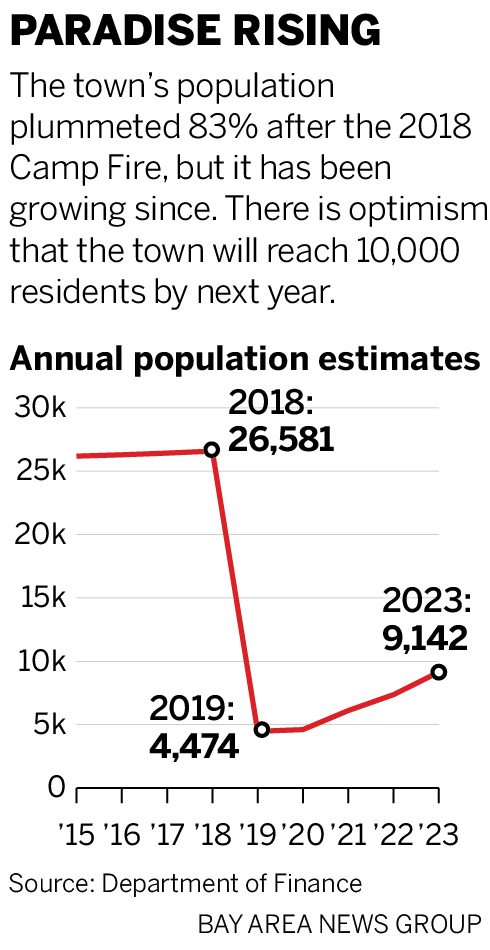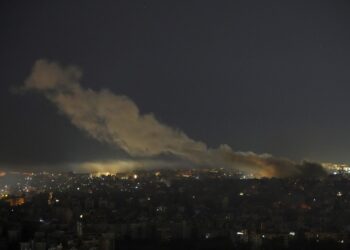PARADISE — As Jen Goodlin tends the snapdragons and squash in her fertile garden, she is surrounded by a town that is a charred skeleton of its former self.
It is also a blank slate, offering a fresh start to a young and energetic generation of newcomers — who vow to build a new Paradise, a smarter community that will never burn again.
“We get to watch it transform,” said Goodlin, 41, who left the comfort of suburban Colorado Springs with her husband and four children to move back home to Paradise.
“We have come so far,” she said. “And we still have so much to do.”
 Five years ago, all seemed lost. On the morning of Nov. 8, 2018, the entire town of Paradise was quickly engulfed in flames as residents frantically rushed to escape the Camp Fire, the deadliest and most destructive wildfire in California history.
Five years ago, all seemed lost. On the morning of Nov. 8, 2018, the entire town of Paradise was quickly engulfed in flames as residents frantically rushed to escape the Camp Fire, the deadliest and most destructive wildfire in California history.
From the moment high winds broke a worn and aged C-hook on a PG&E transmission tower, causing a 115-kilovolt line to drop onto dry brush and ignite and quickly spread, Paradise became a global symbol of risk, tragedy and negligence.
When the fire was finally contained 18 days later, 85 people had died, about 11,000 homes were destroyed and 153,336 acres were burned, shattering lives and livelihoods. An astonishing 90% of Paradise’s housing was gone. Much of the nearby rural communities of Concow, Butte Creek Canyon and Magalia also were lost.
As climate change has intensified the ferocity of California’s wildfires, many looked to Paradise and asked: Is it time to retreat, not rebuild, from areas that are especially flammable?
Instead, Paradise is changing its strategy. It will rebuild differently, safely. Atop a windswept ridge between two wild canyons, the town is preparing for a hotter, drier climate an inspiration for other California towns at risk of nature’s whims and man’s mistakes.
Its people are changing, too.
 A year after the fire, Paradise was such a forbidding hellscape, and residents’ plans for recovery…
A year after the fire, Paradise was such a forbidding hellscape, and residents’ plans for recovery…
Read the full article here







